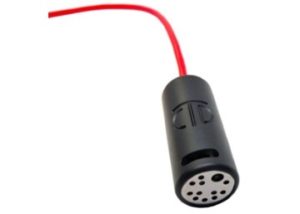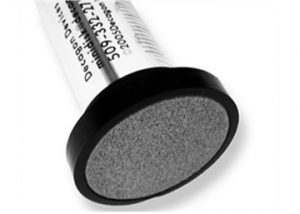more information....
hydrology research & monitoring equipment
 Edaphic Scientific supports a comprehensive range of equipment for the monitoring and research of hydrology in the Australian landscape. We are a one-stop shop for all your measurement requirements including sensors, meters, data loggers, internet access to data, and even assistance with installations, data analysis and interpretation.
Edaphic Scientific supports a comprehensive range of equipment for the monitoring and research of hydrology in the Australian landscape. We are a one-stop shop for all your measurement requirements including sensors, meters, data loggers, internet access to data, and even assistance with installations, data analysis and interpretation.
The ES-SYS range of data logging systems are ideal for hydrology projects. The ES-SYS can support a diverse range of sensors including soil water content, borehole water levels, tensiometers, rainfall and weather stations, drainage and run-off, and many more. Edaphic Scientific delivers the ES-SYS data logging systems to you programmed, wired and ready to measure.
The Eagle platform is Edaphic Scientific's online data access portal. Through the Eagle platform, data can be viewed and monitored, downloaded into a csv file, and alarms and alerts can be set.
Edaphic Scientific has been involved with numerous projects with all of Australia's leading universities, government agencies, as well as large and small consulting firms. Applications include:
- Phytocaps and landfills
- Phytoremediation and mining
- Evapotranspiration
- Water and hydrology budgets
- Catchment and landscape modelling
- Ecohydrology
- Groundwater dependent ecosystems (GDE)
water budgets and the water balance equation
Our range of sensors and meters are commonly used to quantify water budgets for catchments, landfills, phytocaps, urban infrastructure and other applications.
The water balance equation is:
DS = P - R - G - E - T
P = precipitation (rainfall)
R = surface run-off
G = groundwater flow
E = evaporation from soil and canopy surfaces
T = transpiration or sap flow
Edaphic Scientific supplies sensors and equipment to quantify each of these parameters including rain gauges and tipping buckets for precipitation and surface run-off, wick lysimeters for groundwater flow, and sap flow sensors for transpiration.
 transpiration and evapotranspiration
transpiration and evapotranspiration
Evapotranspiration is an important parameter for hydrologists. Edaphic Scientific provides complete solutions for the measurement of evapotranspiration with more information can be found here.
Edaphic Scientific can provide several methods and approaches to quantify evapotranspiration including:
ASCE or FAO-56 Penman-Monteith Potential Evapotranspiration (ETo)
The ATMOS-41 Weather Station accurately measures atmospheric parameters including temperature, relative humidity, vapour pressure deficit, solar radiation, rainfall, wind speed and wind direction.
These parameters are used in the Eagle platform to output reference crop evapotranspiration (ETo) via the ASCE or FAO-56 Penman-Monteith method.
Evapotranspiration with a Kc Crop Factor (ETc)
ETo is the potential amount of evapotranspiration. There are many instances when it is useful to know actual evapotranspiration from various crops or vegetation of interest (for example, regrowth at a mine site or revegetation on a phytocap). ETo is multiplied by a crop factor (Kc) for this purpose. As the name suggest, Kc is a parameter derived for a specific plant or crop such as soybean, wheat, cotton, oak eucalypt, almond, and many others.
Various methods can be used to convert ETo to ETc with the relevant crop factor. Edaphic Scientific can provide crop factors (Kc) for common crops such as vegetables, canola, or horticultural crops such as almonds, citrus, macadamias, and others.
We can also custom calculate a crop factor for your tree where a published is unavailable. We use methods published by Allen et al (1998) to determine crop factor:
Allen et al. (1998). Crop evapotranspiration - Guidelines for computing crop water requirements - FAO Irrigation and drainage paper 56. Weblink.
Sap Flow and Transpiration
Under certain circumstances evapotranspiration can be measured directly with our sap flow sensors. The Implexx Sap Flow Sensor can measure total tree water use (transpiration) for woody species with a stem diameter of at least 10 millimetres. Where soil evaporation is negligible, total tree water use will closely match evapotranspiration.
The Implexx Sap Flow sensor can also be used for evapotranspiration research projects such as quantifying tree water use under Eddy Flux towers. The Implexx Sap Flow Sensor is also useful for quantifying hydraulic redistribution which is an important component of ecosystem hydrology.
groundwater, boreholes and water level/depth
 Groundwater levels are extremely important for a range of hydrology applications. Edaphic Scientific can provide stand-alone groundwater monitoring stations or integrate a water level sensor into a larger hydrology monitoring system.
Groundwater levels are extremely important for a range of hydrology applications. Edaphic Scientific can provide stand-alone groundwater monitoring stations or integrate a water level sensor into a larger hydrology monitoring system.
The HYDROS-21 sensor (formally called the CTD-10) can measure water depth, temperature and electrical conductivity (EC).
The HYDROS-21 water level or depth sensor can measure to a depth of 10m with a precision of 1mm.
The ES-SYS-0 Monitoring System is a low-cost option to monitor one, or a few boreholes or water level sites.
lysimeters
 A weighing lysimeter is designed to measure many hydrology parameters in a single, experimental unit. The weighing lysimeters designed and manufactured by METER Group are used in many applications around the world especially for hydrology and evapotranspiration studies.
A weighing lysimeter is designed to measure many hydrology parameters in a single, experimental unit. The weighing lysimeters designed and manufactured by METER Group are used in many applications around the world especially for hydrology and evapotranspiration studies.
A weighing lysimeter consists of a large cell, typically an open-ended cylinder, that sits atop of a precision balance (weighing device). This instrument can measure water inputs, such as precipitation, flows within the cylinder (drainage or soil moisture), as well as outputs such as transpiration and evaporation and drainage.
A weighing lysimeter is the ideal monitoring and experimental device to precisely quantify hydrological parameters in a system.










